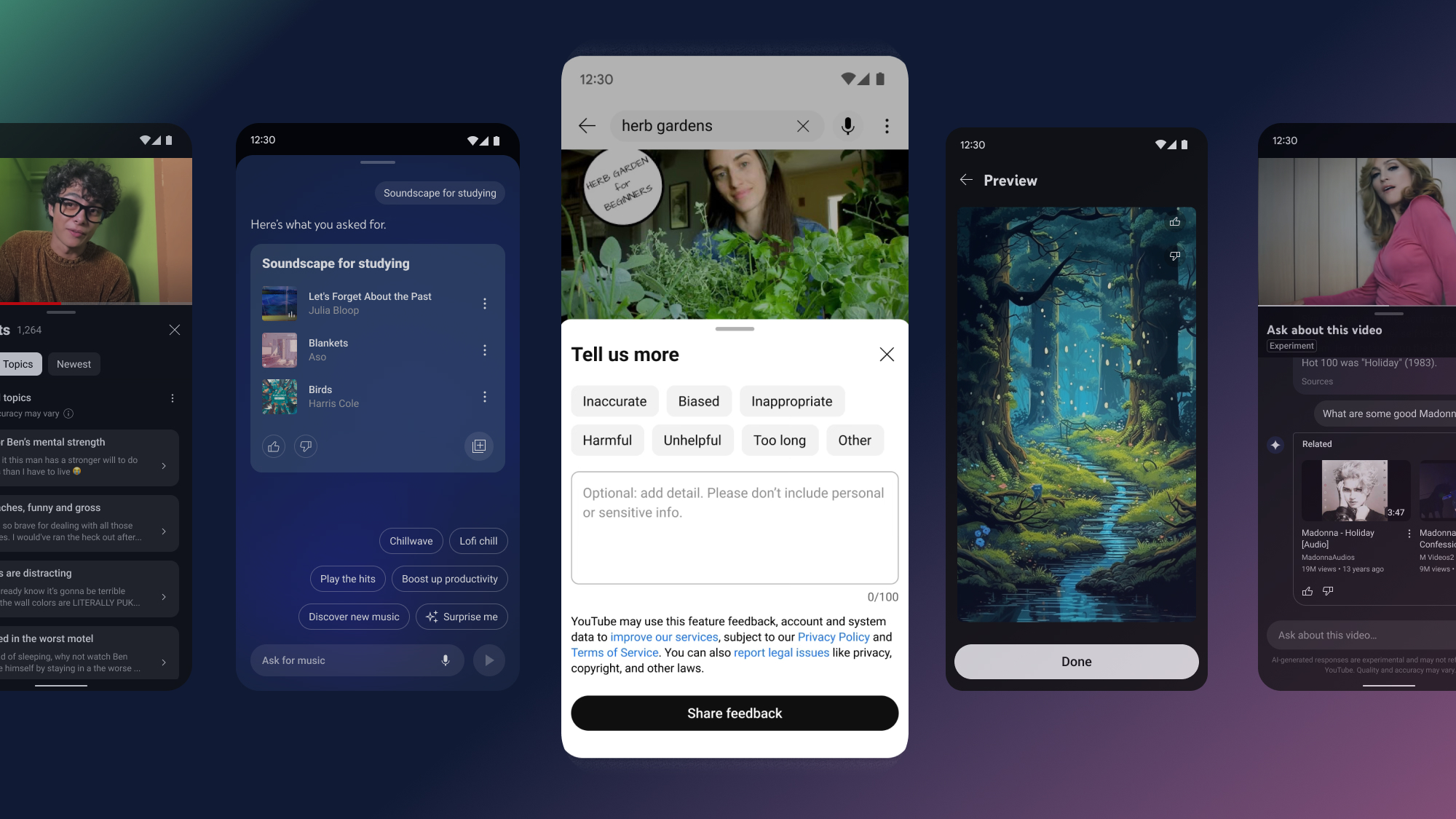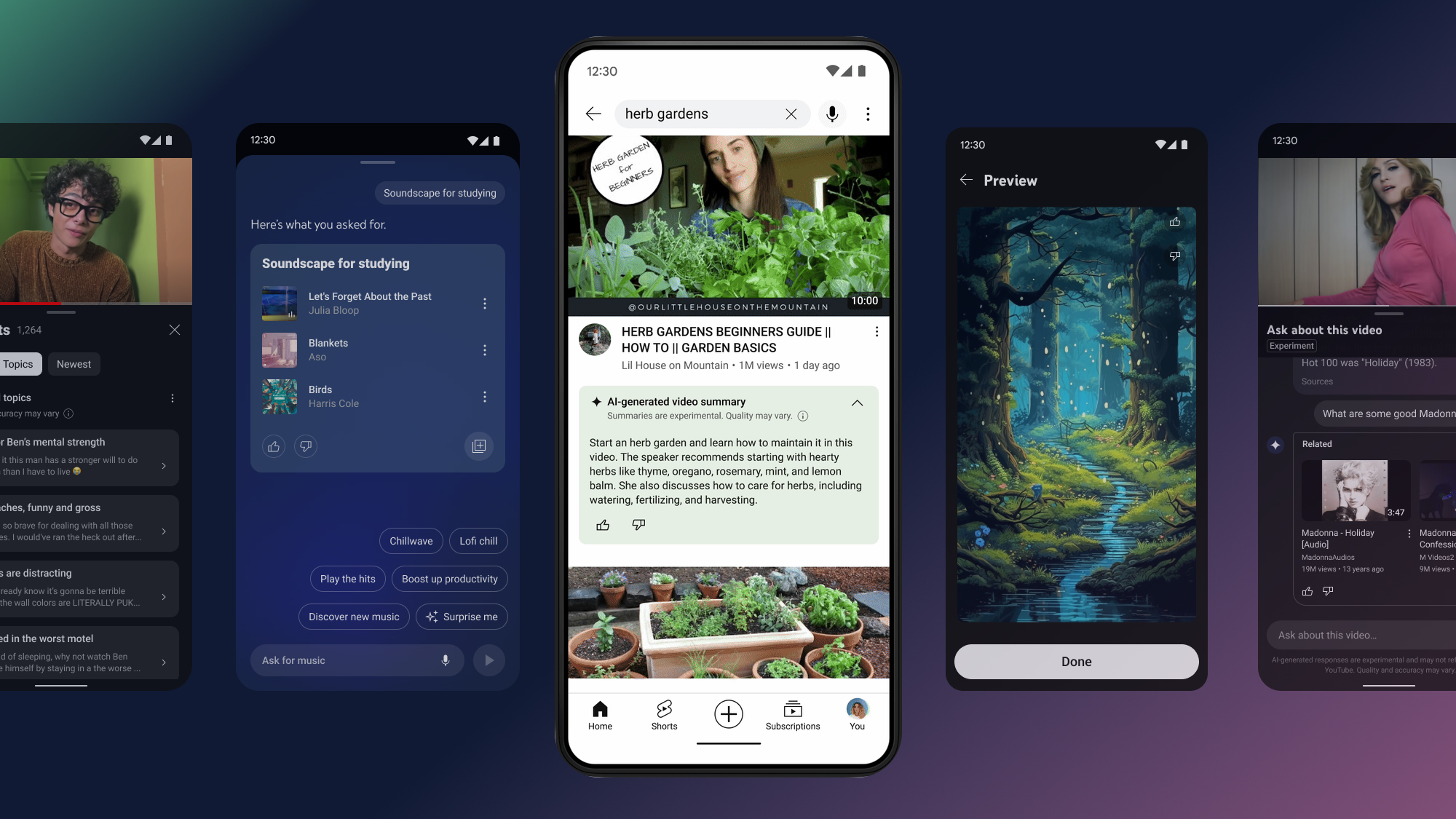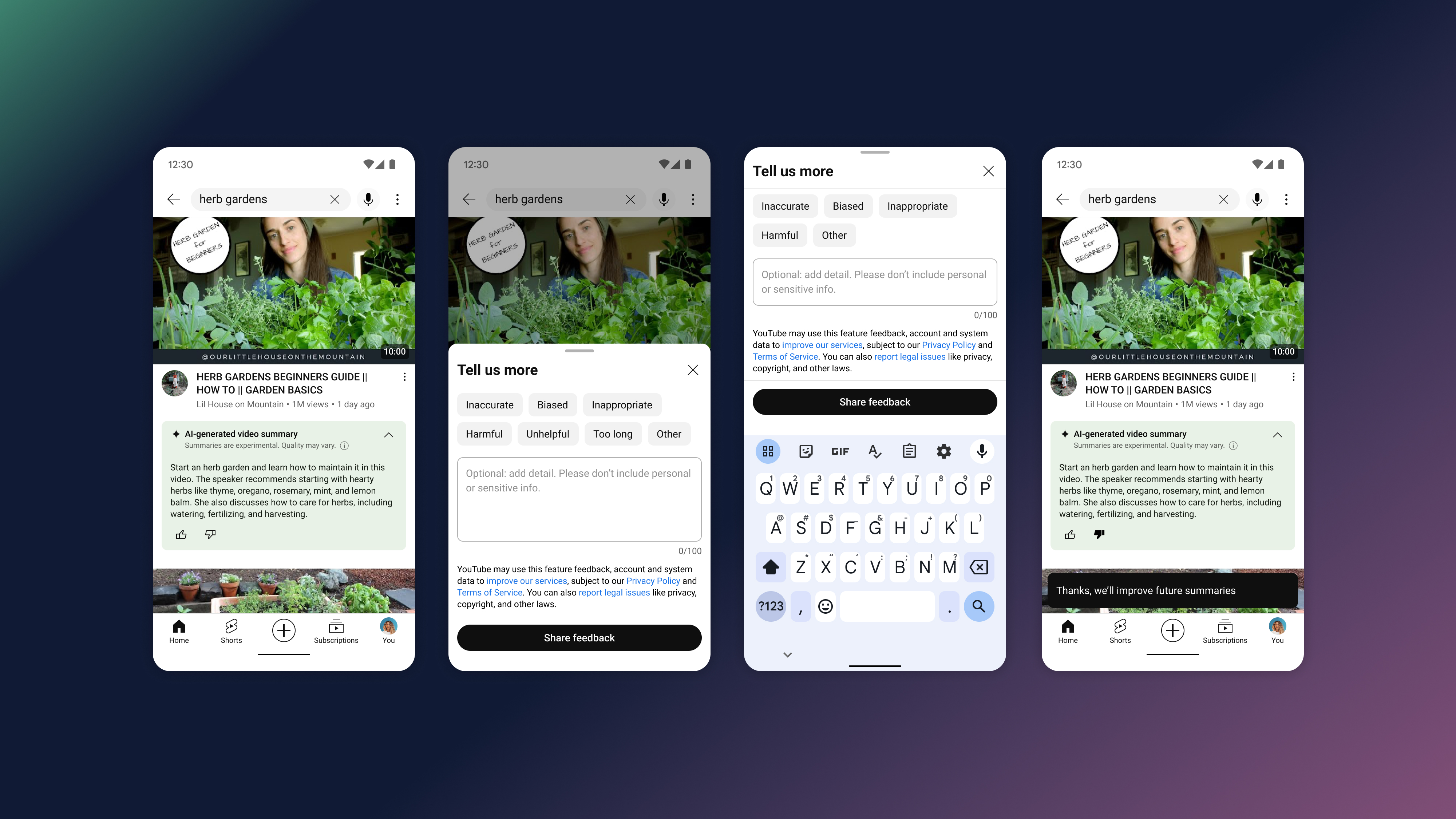
YouTube Trust & Safety
A multitude of features. One feedback system.
In the early days of generative AI, teams across YouTube experimented with integrating LLMs or gen AI advancements into existing features or developing new ones.
One topic kept emerging: how do we design features that are safe for creators, viewers, and YouTube? As individual teams developed their own reactive feedback loops and safety UX, we knew we needed to quickly develop safe solutions that scaled across the variety of experiences.
Building for feature teams as the primary users
YouTube's users are its creators, viewers, and advertisers. But this work focused on feature teams, empowering individual feature teams to be the experts in their specific user journey
I focused on building partnerships with feature teams to understand their needs and let them channel their expertise for creator and viewer needs.

On YouTube, YouTube Music, YouTube Studio...
First and foremost, teams needed a reactive feedback mechanism for responding to safety escalations and improving their models.
I worked with 10 feature teams across YouTube, YouTube Studio, YouTube Music, and YouTube's creation features to understand user journeys and product needs.
Each needed to gather feedback in a very different context. You could encounter an AI-powered feature anywhere, including...
- A creator making a green screen background image while filming a short
- A music listener making a vibe-based playlist
- A viewer asking questions about a video
- A creator looking for creative insights
- A viewer trying to understand the gist of the comments of a video
Something that felt right for a chat-based Q&A just didn't feel right for a passive browsing experience or a creation flow.
I worked closely with T&S engineering to understand the technical constraints of triggering a feedback mechanism across such a broad amount of surfaces. From these distilled insights, we created on a UX of universal components, for a mechanism that could be triggered from any app.
How many entrypoints can one feedback mechanism need?
The most contentious discussion: entry points. Feedback entry points across competitor products varied, with no standard solution — although, thumbs up/down was where things trended. However, these already had a strong existing connotation and storied history on YouTube for giving feedback on videos. They had an expected, established behavior.
We ran research studies with participants across features to understand which entry point users understood. Thumbs up/down and a feedback icon were clear winners, despite misgivings.
Because of its broad scope, I took this product to a UX steering to ensure UX directors across YouTube were aligned. This helped mitigate future risks and ensured buy-in for the launch.
We knew teams would have questions, so we created a playbook for integrating with feedback, including recommendations for entry points, how to use them, and where to use them.

Success: one feedback feature to rule them all
We launched the initial version of feedback on 10 features, and as of writing, it's expanded to 50+ features across all surfaces (Android, iOS, web) and platforms (YouTube, YouTube Studio, YouTube Music). You can now give feedback across all AI-powered features on YouTube.
Future safety work
However, we saw similar, growing safety needs from other teams, specifically around punting language and sensitive requests.
I also worked with T&S product strategy to develop a playbook for safety features when generating sensitive requests.
Because of its broad scope, I took this product to a UX steering to ensure UX directors across YouTube were aligned. This helped mitigate future risks and ensured buy-in for the launch.